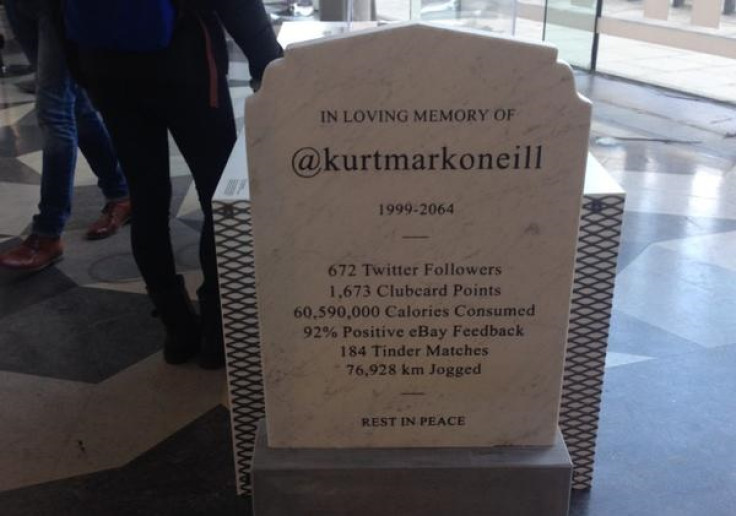Here lies a Twitter user with 672 followers: Is this the gravestone of the future?

What happens to our social media profiles after we die is a topic which Facebook and others have begun to tackle, and now an art installation in Dublin has combined social media with gravestones of the future.
Displayed at the Science Gallery Dublin is a gravestone which documents the deceased person's Twitter followers, Tesco Clubcard points, calories consumed, eBay feedback rating, Tinder matches and distance jogged.
Where once there would be a message of a loving father, brother and son, the emphasis could shift to describe a person with thousands of Twitter followers, who provided fast eBay delivery, jogged every day, and scored hundreds of Tinder matches.
Certainly a tongue-in-cheek look at how quantifying every aspect of our lives is becoming the norm, the gravestone, created by Karl Toomey, draws attention to how our lives - and how we are remembered - is influenced by what we do online.
Facebook recently updated the way it handles profiles of users who have died. An heir can be chosen to look after the profile, which turns into a memorial page, manage friend requests and change the profile and cover pictures. However, the heir cannot view the user's message inbox and they cannot log in as the account holder.
Alternatively, users can tell Facebook to delete their account when the social network is informed of their death.
Managing accounts of the dead may only be a small issue for Facebook, Twitter and others for now, but inevitably the number of accounts, blogs, images and websites belonging to users who are no longer alive - and may be the only ones who knew the password - will rise.
Services like Planned Departure - £199.99 for a lifetime membership - have been created to act as a place to store all of your online login details, digital assets and financial and legal documents for your family to access when you're no longer around.
© Copyright IBTimes 2024. All rights reserved.






